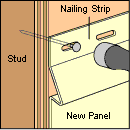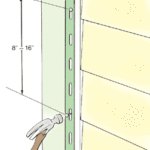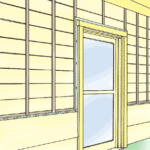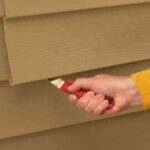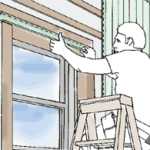An expert guide on the best way to nail vinyl siding, either by hand or using a power nailer. Also learn the right way to hang siding with insulation in mind.
Vinyl siding can either be nailed by hand—with a hammer—or by a power nailer. Following is a discussion of how to do both. Before nailing siding, be sure to read the article How to Install Vinyl or Aluminum Siding for preparation techniques.
How to Nail Vinyl Siding with a Hammer
As outside temperatures change, vinyl siding can expand and contract as much as 1/4 inch over a 12-foot 6-inch length. For this reason:
Do not face nail. Face nailing (driving nails through visible parts of the panels) is not only unsightly, but it will also cause vinyl to buckle with changes in temperature.
Do not nail any siding parts too tight. Leave 1/32 inch between the nail head and the vinyl. Vinyl siding must be attached “loosely.”
Center nails in slots to permit expansion and contraction of the siding.
Drive nails straight and level to prevent distortion and buckling of panel.
Start nailing vertical siding and trim pieces in the top of the uppermost slots to hold them in position. Place all other nails in the center of the slots.
Space nails a maximum of 16 inches apart for horizontal siding panels, every 12 inches for vertical siding panels, and 6 to 12 inches for accessories. (See individual manufacturer’s instructions for fastening specific accessories and for recommended spacing.)
Make sure the panels are locked at the bottom, but do not pull them tight when nailing.
Power-Nailing & Stapling Vinyl Siding
Installing vinyl siding involves a lot of nailing. Because of this, a pneumatic nail gun can make the job much easier. Technique, however, is critical. Because vinyl siding panels must be fastened in place loosely, as described above, power-nailing or stapling panels requires a special adapter that fits on the power nailer or stapler and allows for a slightly-loose attachment.
You can buy these vinyl siding tools online at Amazon.
Always hold the pneumatic stapler or nailer parallel to the siding panels. Place the guide into the nailing slot, and shoot a fastener in the center of the nail slots. All panels should move freely under the fastener to allow for the expansion and contraction caused by temperature changes.
Vinyl siding should be installed in accordance with the installation instructions supplied by the siding manufacturer. Staples and nails must be resistant to corrosion, such as cadmium-coated, galvanized steel, or aluminum varieties.
Staples should be at least 16-gauge and semi-flattened to an elliptical cross-section. The staple’s crown must be at least 7/16 inch wide and its length should be long enough to penetrate into a solid substrate such as sheathing or backerboard of at least 3/4 inch.
Power fasteners are designed to operate at specific air-pressure settings. Set the initial air pressure according to the manufacturer’s recommendation. Test the gun, your air pressure, and your usage technique on the first course of siding. Then, make the required adjustments or changes so that the following conditions are present on all panels fastened:
For fastener depth, provide 1/32-inch clearance between the staple crown or nail head and the siding panel.
Place fasteners at every stud or at a maximum of 16- inch spacing into solid substrate.
Center the fastener leg in the nail slot.
Make sure the panel is loose so that it can move freely in a lateral direction.
During installation, regularly check to be sure you are fastening correctly.



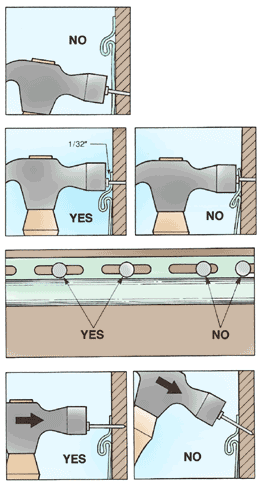
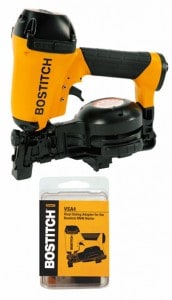
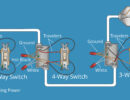
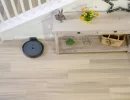
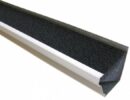
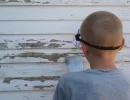
 Don Vandervort writes or edits every article at HomeTips. Don has:
Don Vandervort writes or edits every article at HomeTips. Don has:
